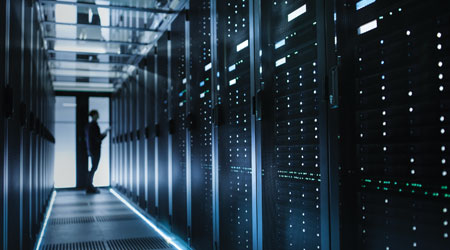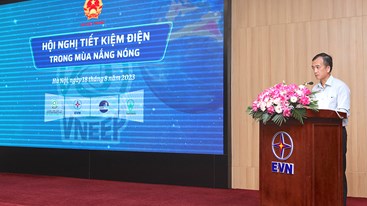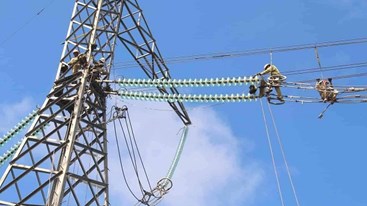Due to their specialized function — housing energy intensive IT equipment and 24/7/365 operations — data center facilities often consume more than 100 times the quantity of electricity of a similarly sized commercial office space. With such large electricity usage, the implementation of effective energy conservation measures in data centers can substantially reduce energy consumption and the associated utility costs. A thorough and detailed analysis of all energy saving opportunities should be made to ensure that the data center total cost of operation is minimized.
 To improve data center energy efficiency, a baseline of current energy efficiency must be determined to measure against future performance
To improve data center energy efficiency, a baseline of current energy efficiency must be determined to measure against future performanceAs energy efficient data center designs and operational standards continue to evolve rapidly within the industry, legacy data center operators need guidance as to what good practices they should consider in order to maximize energy efficiency in their facilities.
To improve data center energy efficiency, a baseline of current energy efficiency must be determined to measure against future performance. Power Usage Effectiveness (PUE) is a metric, originally developed by The Green Grid, that is an industry accepted measurement of data center efficiency. To determine the PUE, a facility manager divides their Total Data Center Energy Consumption by the IT Equipment Energy Consumption.
Direct monitoring/metering of electric current and voltage at various critical locations in the data center will provide the data used to calculate the PUE. Because the IT equipment and total facility electric consumption will vary based upon IT equipment power demand as well as the cooling load due to local weather conditions, PUE should be calculated at frequent intervals. The PUE values can then be integrated to provide a measurement of the “average” energy performance of the data center over a defined duration of time. Energy performance changes can then be tracked to monitor the impact of implemented energy conservation measures.
Opportunities for existing data centers
While industry guidelines and standards identify opportunities to implement energy savings measures in newly constructed data centers or those currently being designed, what measures can an operator of a legacy data center explore to achieve greater facility energy efficiency? While not an exhaustive list, opportunities to be considered include the following:
1. Install Energy Usage Monitoring Equipment
Legacy data centers may lack the robust energy usage monitoring instrumentation and sensors necessary to comply with ASHRAE standards and to gather the measurements to calculate the data center PUE. Installation of energy monitoring components and systems to measure the energy efficiency of the data center are essential to effectively implement all other energy conservation measures.
2. Optimize Supply Air Temperatures
Adjust (increase) HVAC supply air temperatures to create an IT equipment environment consistent with the higher end of the recommended temperature ranges noted in ASHRAE Thermal Guidelines for Data Processing Environments. The higher supply air temperatures will increase compressor efficiency if a DX type unit is utilized for cooling or will increase the efficiency of the chiller plant if chilled water air handling units are utilized for cooling.
3. Optimize CRAC Controls
Stand-alone computer room air-conditioning (CRAC) units utilized in legacy data centers often have individual controls and set-points that result in units running excessively as a consequence of “fighting” each other over temperature and humidity adjustments. Widening of the dead-band for the temperature and humidity settings will reduce the tendency for these units to behave in such a way. More sophisticated control scenarios can be considered to provide additional energy savings.
4. Separate Hold and Cold Air
Create a hot-aisle/cold-aisle layout for IT equipment to maximize the cool air flow to equipment intakes and the removal of warm discharge air from the equipment racks. Creation of the hot-aisles or cold- aisles can be accomplished through the addition of partitions or ceilings to eliminate the mixing of hot air and cold air.
5. Improve Underfloor Air Pressure Management
For data centers with raised floor plenums, ensuring that the raised floor system is properly sealed and that unnecessary underfloor blockages are removed will improve energy efficiency. Uncontrolled air leakage from the raised floor can result in inadequate quantities of cooled air reaching the IT equipment. Underfloor blockages and obstructions can also cause inadequate cool air flows to the equipment. These conditions necessitate higher HVAC supply air temperatures and additional fan energy to handle the equipment cooling loads.
6. Improve CRAC Unit Efficiency
Improvements in the energy efficiency of CRAC units, including the use of variable-speed control for supply air fans and the use of electronically commutated (EC) motors, are standard features in new CRAC units. Retrofitting existing CRAC units or replacing older CRAC units with these features will provide energy savings.
7. Improve Transformer Efficiencies
For data center facilities that contain older electrical distribution components that are nearing the end of their expected useful life, cost-effective energy savings can be obtained by replacing existing standard efficiency electrical transformers with high-efficiency transformers. In addition to incurring lower internal electrical losses, the high-efficiency transformers produce less waste heat that needs to be mechanically cooled. At the time of replacement, re-configuring the facility power distribution system to reduce the number of transformers needed, if practical, can also yield energy savings.
8. Improve Lighting Efficiency
For facilities that are currently illuminated with fluorescent lamped light fixtures, replacement or retrofitting to LED type fixtures will provide significant energy savings. Installation of enhanced lighting controls such as occupancy/motion sensors or additional manual controls to allow for lights to be shut off when spaces are vacant can also be cost-effective energy savings measures.
Operators of legacy data centers can reduce the total cost of operations in their facilities by integrating any of these energy savings opportunities. The projected savings and costs for each opportunity should be closely evaluated to determine which measures are most cost effective, with financial resources allocated accordingly. As with all retrofit projects, considerations should include flexibility to accommodate possible future changes in technology as well as business operating conditions.
By Facilitiesnet









.jpg?w=367&h=206&mode=crop) Energy efficiency and conservation usage is an important aspect of the national energy development strategy
Energy efficiency and conservation usage is an important aspect of the national energy development strategy
 Challenges and Opportunities to promote energy efficiency market in Vietnam
Challenges and Opportunities to promote energy efficiency market in Vietnam
 The Ministry of Industry and Trade requests government agencies to coordinate in organizing Earth Hour 2024
The Ministry of Industry and Trade requests government agencies to coordinate in organizing Earth Hour 2024
 Consultation on Energy Efficiency Boiler Catalogue and Wood Drying Guideline
Consultation on Energy Efficiency Boiler Catalogue and Wood Drying Guideline
 Son Ha Co., Ltd, applies energy efficiency and conservation measures
Son Ha Co., Ltd, applies energy efficiency and conservation measures
 Phuc Kien Co., Ltd., is effectively implementing energy-saving measures
Phuc Kien Co., Ltd., is effectively implementing energy-saving measures
.png?w=367&h=206&mode=crop) Request for expression of interest - C2.1.13: Capacity Building on energy efficiency policies development
Request for expression of interest - C2.1.13: Capacity Building on energy efficiency policies development